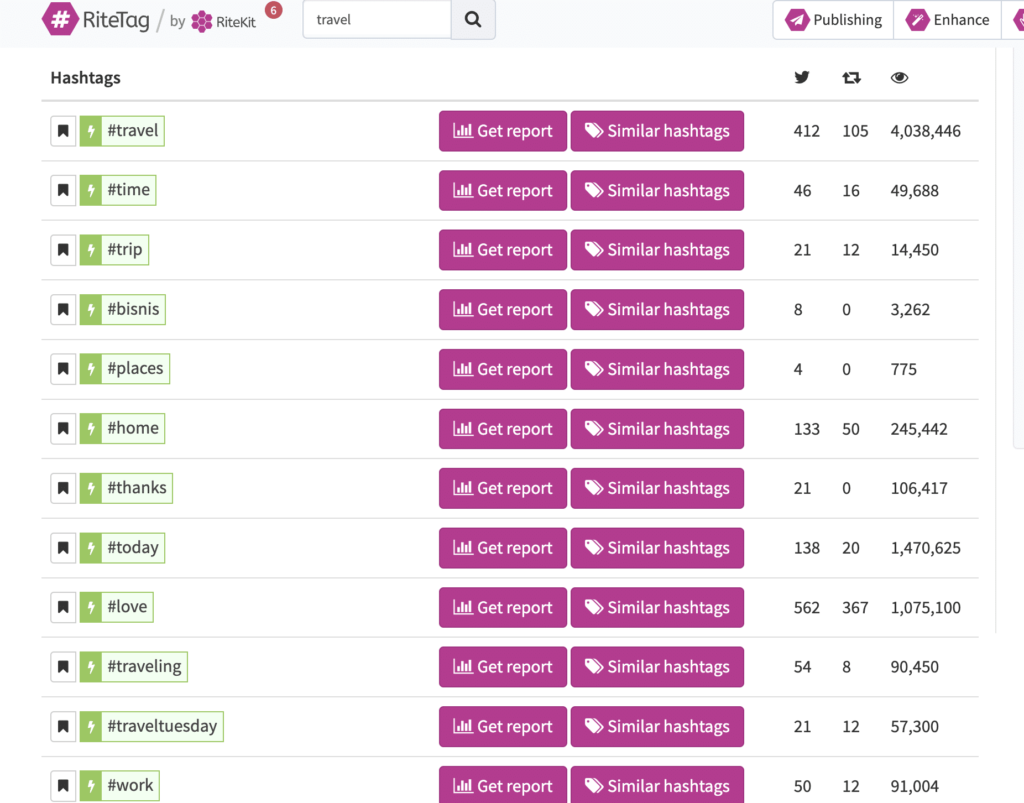By Jacob Drouin
A successful social media campaign can cut through the noise online rather than adding to it. Unfortunately, creating one is easier said than done. With thousands of brands competing for users’ attention, you need to use all tools available to get a post in front of your target audience. Hashtags are here to help. You can use them for research, to reach niche communities and to involve your brand in trending conversations as well. Here are a few tips for integrating hashtags into your social media strategy:
Research
Every campaign begins with research. On social media, this means finding conversations for your brand to interact with. A good first step is to find a hashtag with a specific keyword and begin looking through posts. While scrolling through posts, pay attention to which accounts are using the hashtag and what other conversations and communities they are involved in. If you see any other hashtags popping up frequently as you research, check them out! They might lead you to more conversations and audiences that your brand can be a part of.

Implementation
You’ve done your research. You know what conversations are happening and which hashtags to use. Now it’s time to post. Every social media platform has its own etiquette, so you need a strategy to match each one. Here are some rules of thumb for a few popular platforms:
Twitter: Posts with two hashtags attract the most engagement. Although it can tempting to use more than two in order to reach more users, the more hashtags a post has the messier it looks, and engagement begins to drop.
Instagram: You can get away with using more hashtags on Instagram, but too many can still make your post look messy. A better tactic is to add your hashtags in a comment below the post. This allows your content to reach the same audiences without sacrificing on appearance.
TikTok: On TikTok, hashtags only work in the caption to help the algorithm find your target audience. More hashtags is generally better on this platform, so try to start the caption off with some text and fill up the rest of the word count with relevant hashtags.
Trends & Niches
One of the trickiest parts of using hashtags in your social media strategy is understanding when to capitalize on popular hashtags and when to focus on niches. There are benefits and drawbacks to both. Trending hashtags can amplify your post to a larger audience, but they also have a higher volume of content to compete with, so your post may get lost in the crowd. Niche hashtags, on the other hand, share your post with less users, but they tend to resonate more with the target audience. A good general practice is to use niche hashtags on your normal scheduled content and reserve the more popular hashtags for spur of the moment trends.
Although they can sometimes get confusing, knowing how to research and implement hashtags into your campaigns is one of the most surefire ways to attract attention and engagement for your brand on social media. There are plenty of online tools to help you start tracking hashtags, but always trust your own judgement over the judgement of an algorithm. As long as you start with research and plan out your posts accordingly, hashtags can help you propel your brand to new audiences and conversations that you might never have seen otherwise!




Hi Jacob, this is such an informative and interesting read! I really liked how you explained different hashtag strategies for different platforms. I learned a lot from this post, and I definitely want to look into this topic more because this knowledge could come in handy later when planning a campaign.
Hi Jacob!
Thanks for going into detail in all three of these platforms. I actually did not know about the two hashtags on twitter! I figured Instagram had the most hashtag activity but it is interesting to know tik tok has been utilizing this feature as well. It’s great to see the hashtag phenomenon is still going on! Especially now with all of the paid options made available.
Hey Jacob! You did a great job on this blog post. I really enjoyed reading it and appreciated how thorough it was. I think you included some great tips that I plan on using at my internship! Specifically, I liked that you explained each social platform individually and included details on how to succeed at all of them.